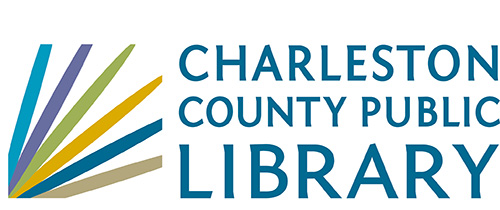Menu
×
West Ashley Library
9 a.m. - 6 p.m.
Phone: (843) 766-6635
Folly Beach Library
9 a.m. - 1 p.m.
Phone: (843) 588-2001
Edgar Allan Poe/Sullivan's Island Library
Closed for renovations
Phone: (843) 883-3914
Wando Mount Pleasant Library
9 a.m. - 6 p.m.
Phone: (843) 805-6888
Village Library
9 a.m. - 6 p.m.
Phone: (843) 884-9741
St. Paul's/Hollywood Library
9 a.m. - 6 p.m.
Phone: (843) 889-3300
Otranto Road Library
9 a.m. - 6 p.m.
Phone: (843) 572-4094
Mt. Pleasant Library
9 a.m. – 6 p.m.
Phone: (843) 849-6161
McClellanville Library
9 a.m. - 1 p.m.
Phone: (843) 887-3699
Keith Summey North Charleston Library
9 a.m. – 6 p.m.
Phone: (843) 744-2489
John's Island Library
9 a.m. - 6 p.m.
Phone: (843) 559-1945
Hurd/St. Andrews Library
9 a.m. - 6 p.m.
Phone: (843) 766-2546
Miss Jane's Building (Edisto Library Temporary Location)
9 a.m. – 3 p.m.
Phone: (843) 869-2355
Dorchester Road Library
9 a.m. - 6 p.m.
Phone: (843) 552-6466
John L. Dart Library
9 a.m. - 6 p.m.
Phone: (843) 722-7550
Baxter-Patrick James Island
9 a.m. - 6 p.m.
Phone: (843) 795-6679
Main Library
9 a.m. - 6 p.m.
Phone: (843) 805-6930
Bees Ferry West Ashley Library
9 a.m. - 6 p.m.
Phone: (843) 805-6892
Mobile Library
9 a.m. - 5 p.m.
Phone: (843) 805-6909
Today's Hours
West Ashley Library
9 a.m. - 6 p.m.
Phone: (843) 766-6635
Folly Beach Library
9 a.m. - 1 p.m.
Phone: (843) 588-2001
Edgar Allan Poe/Sullivan's Island Library
Closed for renovations
Phone: (843) 883-3914
Wando Mount Pleasant Library
9 a.m. - 6 p.m.
Phone: (843) 805-6888
Village Library
9 a.m. - 6 p.m.
Phone: (843) 884-9741
St. Paul's/Hollywood Library
9 a.m. - 6 p.m.
Phone: (843) 889-3300
Otranto Road Library
9 a.m. - 6 p.m.
Phone: (843) 572-4094
Mt. Pleasant Library
9 a.m. – 6 p.m.
Phone: (843) 849-6161
McClellanville Library
9 a.m. - 1 p.m.
Phone: (843) 887-3699
Keith Summey North Charleston Library
9 a.m. – 6 p.m.
Phone: (843) 744-2489
John's Island Library
9 a.m. - 6 p.m.
Phone: (843) 559-1945
Hurd/St. Andrews Library
9 a.m. - 6 p.m.
Phone: (843) 766-2546
Miss Jane's Building (Edisto Library Temporary Location)
9 a.m. – 3 p.m.
Phone: (843) 869-2355
Dorchester Road Library
9 a.m. - 6 p.m.
Phone: (843) 552-6466
John L. Dart Library
9 a.m. - 6 p.m.
Phone: (843) 722-7550
Baxter-Patrick James Island
9 a.m. - 6 p.m.
Phone: (843) 795-6679
Main Library
9 a.m. - 6 p.m.
Phone: (843) 805-6930
Bees Ferry West Ashley Library
9 a.m. - 6 p.m.
Phone: (843) 805-6892
Mobile Library
9 a.m. - 5 p.m.
Phone: (843) 805-6909
Patron Login
menu
Item request has been placed!
×
Item request cannot be made.
×
 Processing Request
Processing Request
Indole-3-acetaldehyde dehydrogenase-dependent auxin synthesis contributes to virulence of Pseudomonas syringae strain DC3000.
Item request has been placed!
×
Item request cannot be made.
×
 Processing Request
Processing Request
- Author(s): McClerklin, Sheri A.; Lee, Soon Goo; Harper, Christopher P.; Nwumeh, Ron; Jez, Joseph M.; Kunkel, Barbara N.
- Source:
PLoS Pathogens; 1/2/2018, Vol. 14 Issue 1, p1-24, 24p- Subject Terms:
- Source:
- Additional Information
- Abstract: The bacterial pathogen Pseudomonas syringae modulates plant hormone signaling to promote infection and disease development. P. syringae uses several strategies to manipulate auxin physiology in Arabidopsis thaliana to promote pathogenesis, including its synthesis of indole-3-acetic acid (IAA), the predominant form of auxin in plants, and production of virulence factors that alter auxin responses in the host; however, the role of pathogen-derived auxin in P. syringae pathogenesis is not well understood. Here we demonstrate that P. syringae strain DC3000 produces IAA via a previously uncharacterized pathway and identify a novel indole-3-acetaldehyde dehydrogenase, AldA, that functions in IAA biosynthesis by catalyzing the NAD-dependent formation of IAA from indole-3-acetaldehyde (IAAld). Biochemical analysis and solving of the 1.9 Å resolution x-ray crystal structure reveal key features of AldA for IAA synthesis, including the molecular basis of substrate specificity. Disruption of aldA and a close homolog, aldB, lead to reduced IAA production in culture and reduced virulence on A. thaliana. We use these mutants to explore the mechanism by which pathogen-derived auxin contributes to virulence and show that IAA produced by DC3000 suppresses salicylic acid-mediated defenses in A. thaliana. Thus, auxin is a DC3000 virulence factor that promotes pathogenicity by suppressing host defenses. [ABSTRACT FROM AUTHOR]
- Abstract: Copyright of PLoS Pathogens is the property of Public Library of Science and its content may not be copied or emailed to multiple sites or posted to a listserv without the copyright holder's express written permission. However, users may print, download, or email articles for individual use. This abstract may be abridged. No warranty is given about the accuracy of the copy. Users should refer to the original published version of the material for the full abstract. (Copyright applies to all Abstracts.)
- Abstract:
Contact CCPL
Copyright 2022 Charleston County Public Library Powered By EBSCO Stacks 3.3.0 [350.3] | Staff Login


No Comments.